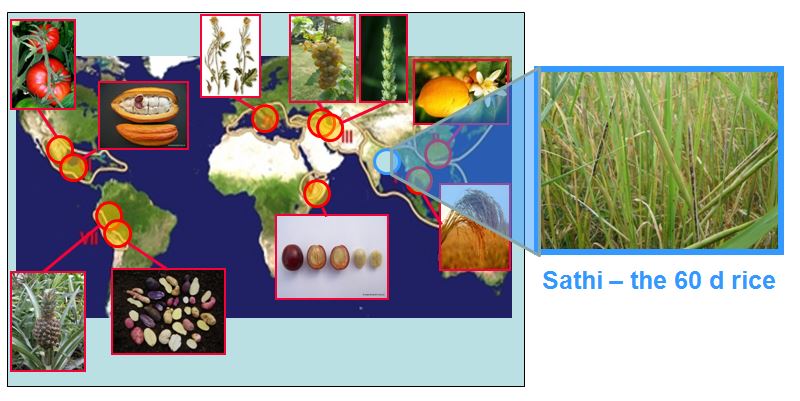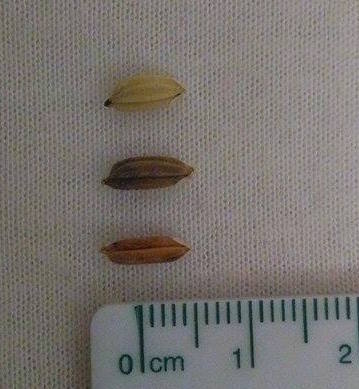Landraces of Rice
Since breeding is nothing else than the combination of variation and selection (remember Darwin's starting point), crop breeding lives and dies with the availability of genetic variation. During the often several millenia of human domestication, thousands of crop varieties have been generated in most species. These were usually generated in a non-intentional way by sowing a part of the seeds that had been harvested in the year before. With time, the respective variety became optimally adapted to the conditions prevailing in the respective region. These so called landraces are not genetically homogenous, but represent populations that continue to evolve, when the conditions change. This evolution has led to a situation, where the population is optimally adapted to soil, climate, diseases, and agricultural practice in a given region. However, since their yield is often low, they are progressively falling out of use and once they are not cultivated, they are lost. Modern agriculture relies upon cultivars, these are genetically homogenous (homozygous) seeds with a predictable behaviour and high yield. The price for the high yield has often been a loss of resilience to unfavourable conditions. These high-yielding elite cultivars are usually cultivated under optimal conditions - from fertiliser till irrigation or chemical plant protection, such that the loss of resilience is not manifest. However, in developing countries, where farmers do not have the money to buy expensive fertiliser or pesticides, or where, due to climatic fluctuations, plants are confronted with non-favourable conditions, these modern cultivars often perform poorly. Since the farmers have often spent their last funds to buy the expensive seeds, any deviation from the optimum needed to get the high yield, will drive the farmer into ruin. Since these elite cultivars are genetically homozygous, they are not able to adapt by evolution. Evolution stops, when there is no genetic variation... Landraces have therefore acquired considerable interest as genetic resources for resilience breeding, however, they twindle with a speed that makes it questionable, whether the genes of resilience can be captured before disappearing. The centers of agrobiodiversity have been mapped by the Russian geneticist Vavilov in the first third of the past century. Most of these centers are situated in politically unstable regions of the world, which makes it even more difficult to preserve these genetic treasures for mankind.


